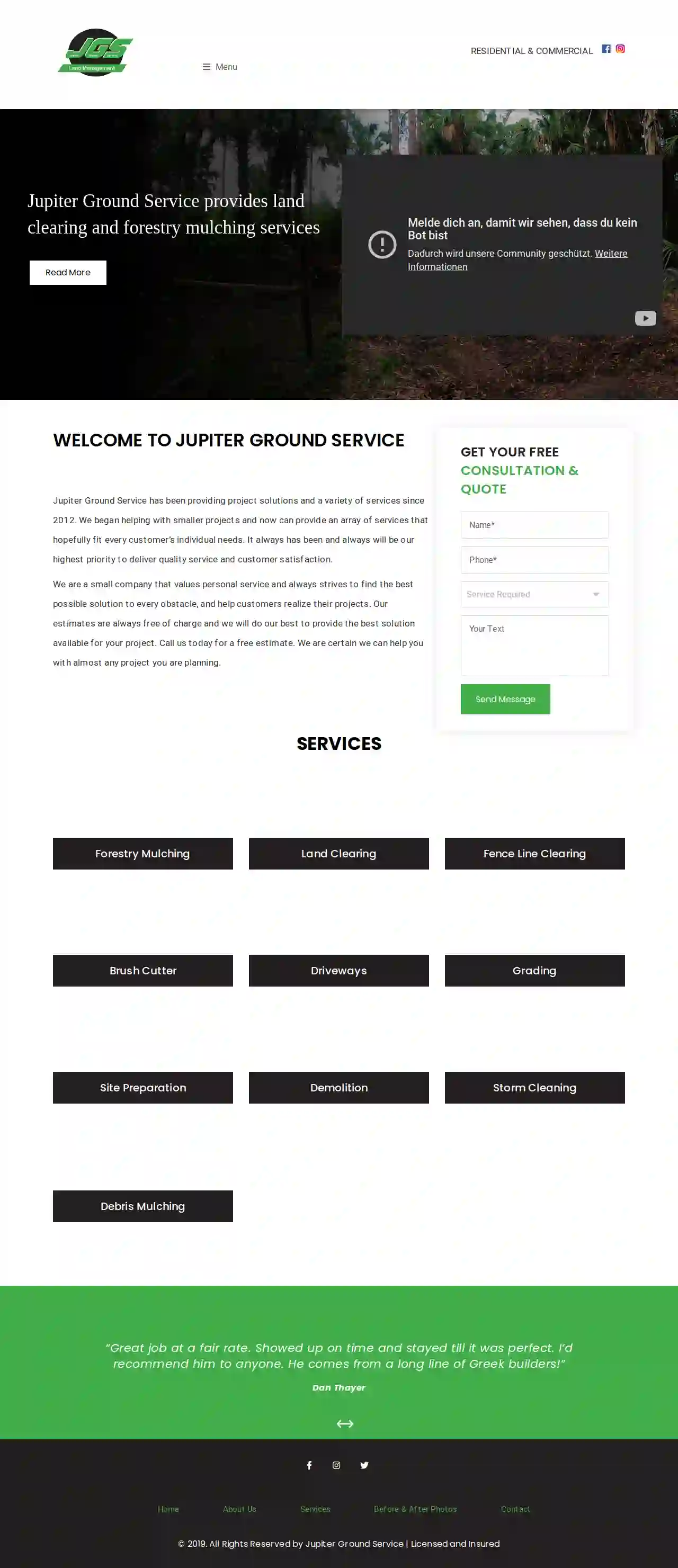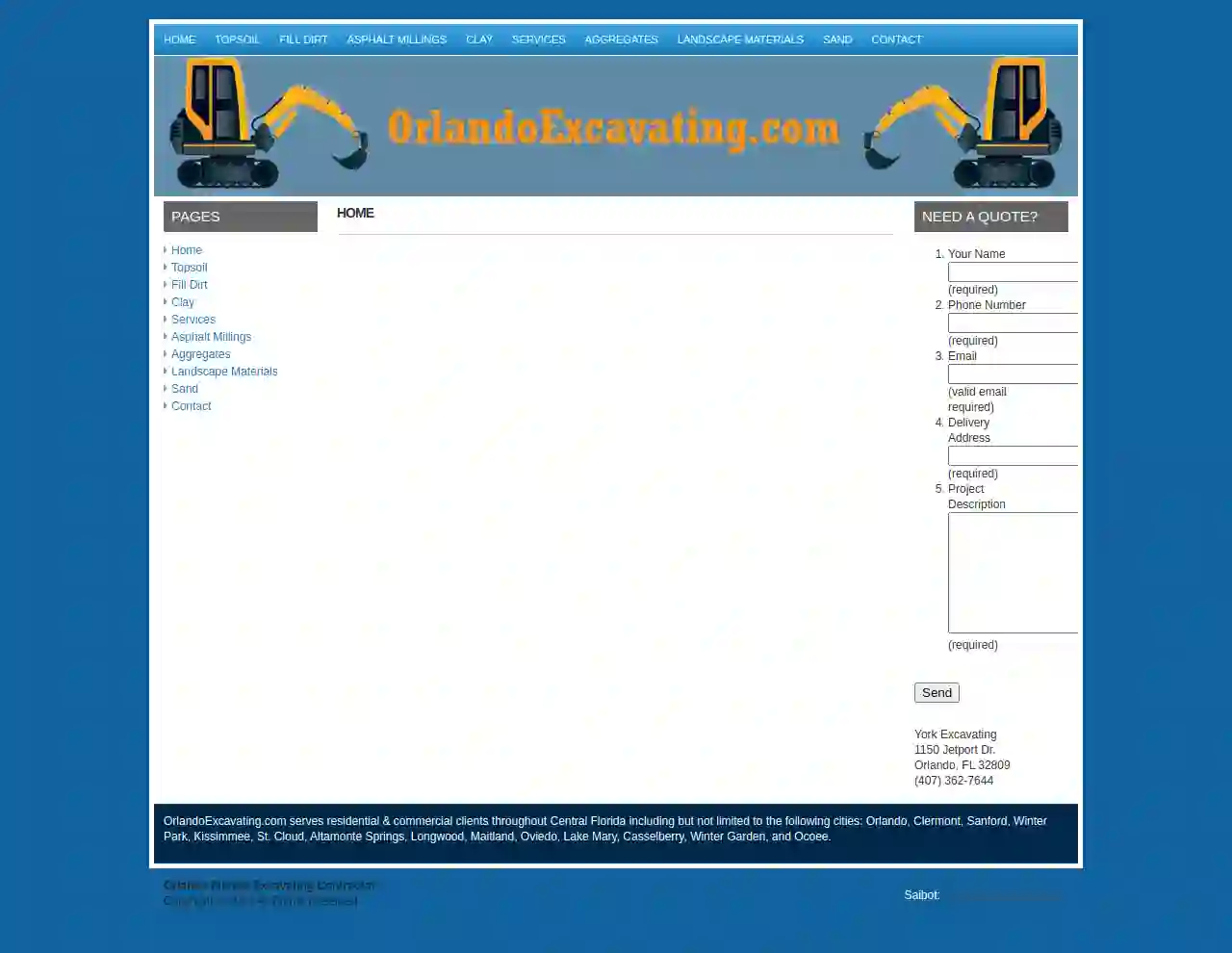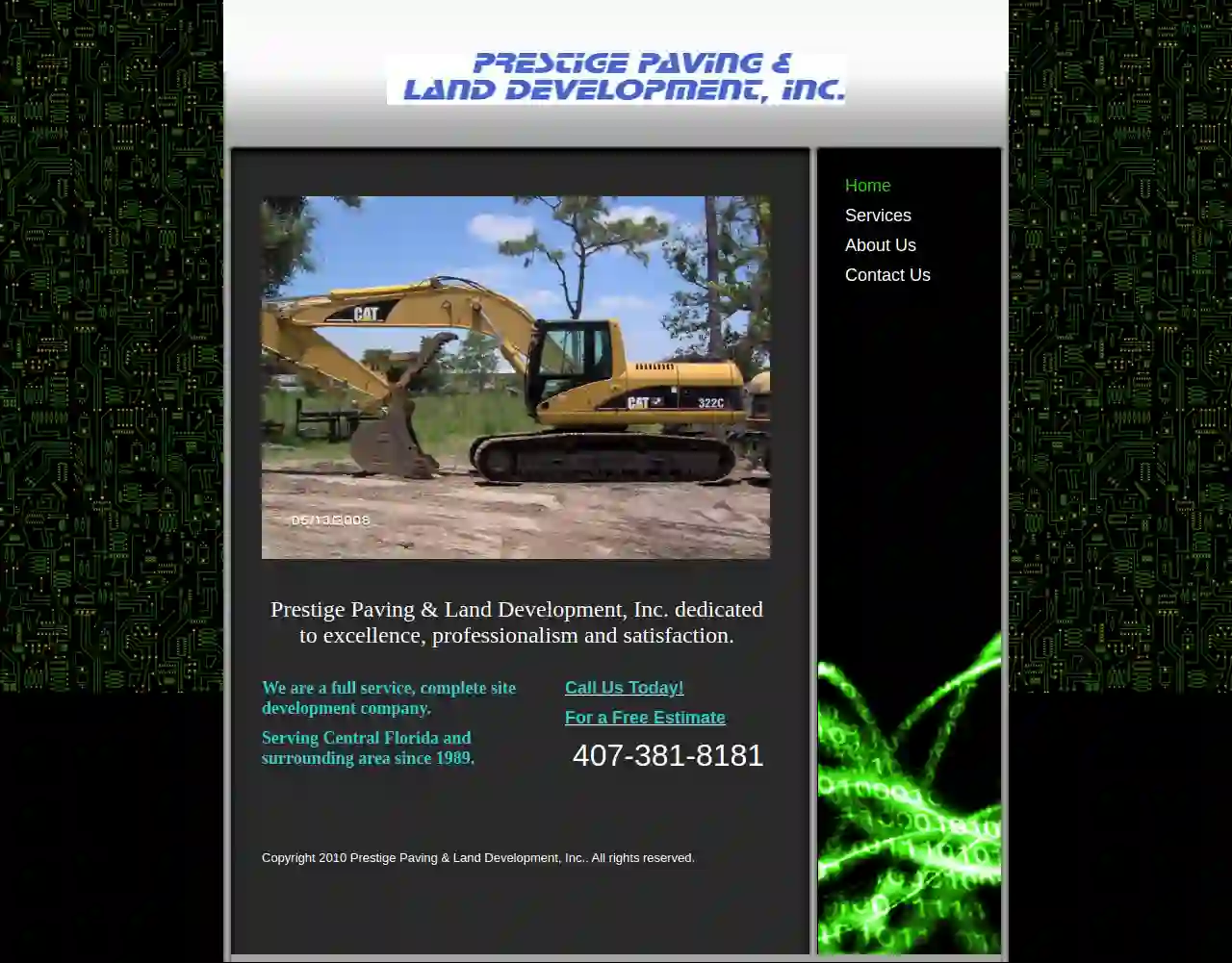Demolition Contractors Miramar
Find Demolition Contractors in Miramar
Receive up to 3 Demolition Company Near Me quotes for your project today! Compare profiles, reviews, accreditations, portfolio, etc... and choose the best service.

Things & Stuff LLC Tractor Excavation Land Clearing and Forestry Mulching
532 reviews2506 Timbercreek Loop E., Lakeland, 33805, USAbout Things & Stuff LLC A Lakeland, Florida native, I've been self-employed since I was about 12 years old. I started with my own neighborhood lawn business, then expanded to pallet wall and furniture building. Eventually, I moved into home repairs and rehabs. But after purchasing my first tractor, there was no turning back. I established my own LLC for my tractor, skid steer, and excavation company, becoming fully licensed and insured. I continue to add equipment to make my services more affordable (by avoiding rental costs). Recently, I've added dumpster rental and demo to my services, launching Junk That Stuff as a new division. I'm committed to continuous learning and growth in my business, ensuring I'm better equipped to serve you, my valued customer. Things & Stuff is my passion, and honesty and reliability are the cornerstones of my company. I've been working with earth moving machinery for a significant amount of time. From a young age, I've honed my skills to meet the diverse needs of my clients. As a small business, I've experienced steady growth while maintaining a personal touch, providing my customers with the attention they deserve and expect. Customer satisfaction is my top priority, and my goal is to build lasting relationships with repeat customers. "~Things & Stuff, owned and operated by Jonathan Edwards"
- Services
- Why Us?
- Our Team
- Gallery
Get Quote
HHH Construction of NWF, Inc
51 reviews8190 Belle Pines Lane, Pensacola, 32526, USHHH Construction: Your Trusted Partner for Construction Services in Northwest Florida HHH Construction is a reputable and experienced construction company serving Northwest Florida. We specialize in a wide range of services, from site preparation and land clearing to drainage and environmental restoration. Our team of skilled professionals is dedicated to providing high-quality workmanship and exceptional customer service. We understand that every project is unique, and we work closely with our clients to ensure their vision is realized. Our commitment to safety, efficiency, and environmental responsibility sets us apart as a leader in the industry. Whether you're a homeowner, business owner, or government agency, HHH Construction is your one-stop shop for all your construction needs. Contact us today for a free consultation and let us help you bring your project to life.
- Services
- Why Us?
- Gallery
Get Quote
Jupiter Ground Service LLC
4.912 reviewsPort St. Lucie, USWelcome to Jupiter Ground Service Jupiter Ground Service has been providing project solutions and a variety of services since 2012. We began helping with smaller projects and now can provide an array of services that hopefully fit every customer’s individual needs. It always has been and always will be our highest priority to deliver quality service and customer satisfaction. We are a small company that values personal service and always strives to find the best possible solution to every obstacle, and help customers realize their projects. Our estimates are always free of charge and we will do our best to provide the best solution available for your project. Call us today for a free estimate. We are certain we can help you with almost any project you are planning.
- Services
- Why Us?
- Testimonials
- Gallery
Get Quote
All American Land Clearing & Tractor Services
4.820 reviewsPort Saint Lucie, USAbout Us Welcome to All American Land Clearing & Tractor Services, your premier destination for all your land clearing and tractor service needs. Based in the heart of the Treasure Coast, we proudly serve the areas spanning from Palm Bay, FL to West Palm Beach. With a strong commitment to excellence, our company is founded on the principles of customer satisfaction and affordability. Backed by extensive experience and knowledge, we deliver the highest quality service to our valued clients. No job is too big or too small – we consistently strive for greatness in every project we undertake. At All American, we prioritize a one-on-one approach with our clients, ensuring the highest quality and satisfaction at every step. Our expertise encompasses a range of services, including land clearing, earthwork, bobcat and tractor service, milling, finish grading, and more. We are also well-equipped to handle pine tree stump removal, providing comprehensive solutions for all your land enhancement needs. Experience excavation excellence with our skilled team and advanced machinery. We take pride in transforming properties and optimizing land potential through meticulous attention to detail and precision. Choose All American Land Clearing & Tractor Services for professional, reliable, and top-notch solutions that exceed expectations. Contact us today to discuss your project requirements and let us help you bring your vision to life. Take the Next Step with All American Land Clearing and Tractor Services Contact us today and let's discuss your project requirements and find the perfect solution for you.
- Services
- Why Us?
- Gallery
Get Quote
Orlando Florida Excavating Contractor
2.79 reviews1150 Jetport Dr., Orlando, 32809, USOrlando Excavating is a trusted excavating contractor serving residential and commercial clients throughout Central Florida. We offer a wide range of services, including topsoil, fill dirt, asphalt millings, clay, aggregates, landscape materials, and sand. Our team of experienced professionals is dedicated to providing high-quality services at competitive prices. We are committed to safety and environmental responsibility, and we strive to exceed our clients' expectations on every project. We are proud to serve the following cities in Central Florida: Orlando, Clermont, Sanford, Winter Park, Kissimmee, St. Cloud, Altamonte Springs, Longwood, Maitland, Oviedo, Lake Mary, Casselberry, Winter Garden, and Ocoee.
- Services
- Why Us?
Get Quote
Dirty South Land Management
1Robertsdale, USDirty South Land Management Based in Robertsdale, AL, Dirty South Land Management offers professional land clearing services in the surrounding areas with expertise in clearing, grading, and site preparation projects. About Us At Dirty South Land Management, we are a team of experienced professionals dedicated to providing top-notch land clearing services in Robertsdale, AL and surrounding areas. With our specialized equipment and expertise, we tackle projects big and small with precision and efficiency. Trust us to transform your property into a clean slate for future developments.
- Services
- Why Us?
- Testimonials
- Gallery
Get Quote
Prestige Paving & Land Development, Inc.
3.47 reviewsOrlando, USPrestige Paving & Land Development, Inc. is dedicated to excellence, professionalism, and satisfaction. We are a full-service, complete site development company serving Central Florida and the surrounding area since 1989. Call us today for a free estimate!
- Services
- Why Us?
- Gallery
Get Quote
YP Septic Excavations
1930 NW 143rd Street, USAbout YP Septic Excavations LLC YP Septic Excavations LLC is a family-owned and operated construction company specializing in the installation of high-quality septic systems, lift stations, and French drainage. Founded in 2021 by Yosbel Paez, YP Septic Excavations LLC takes pride in its experienced and licensed team who are dedicated to providing meticulous services at the earliest convenience of customers, while also caring for the environment and leaving a clean, leveled site after construction. Our Expertise 500+ Successful Projects Completed 310 Average amount of days to complete the job after receiving the deposit 2021 Established Years of Experience Yosbel Paez CEO, YP Septic Excavations LLC Our Collection We Offer a Range of Services to Meet Your Needs At YP Septic Excavations LLC, we are committed to providing personalized solutions that address your unique requirements. Our dedicated team ensures that every aspect of your project is handled with the utmost care and expertise. We offer Free Consultations and Estimates. For consultations that require coming to the site and determining the cause of the problem, a fee of 150$ will be charged. If a customer decides to do the repair with us, a 150$ fee will be deducted from the price of the project.
- Services
- Why Us?
- Our Team
- Gallery
Get Quote
Bloodgood Construction
51 reviews682 NW 34th st, Miami, 33127, USBloodgood Construction We are a Florida State Certified Building Contractor. Contact us regarding your construction project. Services Offered Residential Construction Commercial Building Remodeling of existing buildings Custom fabrication / Cabinetry / Millwork Construction Consulting Engineering Architectural design Project management About Us Grant Bloodgood, the founder, studied design at Parsons in New York and holds a Masters of Fine Arts Degree in Multimedia with a concentration in Sculpture. With over 30 years of experience, he brings his artistic vision and skilled craftsmanship to every project, transforming your home or dream into a reality. Our Approach We design custom architectural solutions, providing engineering and architectural design services within our team. We understand your design needs and offer solutions that streamline the process from conceptual renderings, zoning surveys, marketing analysis, and complete design plans. Quality Construction We have a local team of skilled craftsmen with over thirty years of experience in residential and commercial construction. We are committed to building the highest quality spaces, exceeding your expectations and bringing your dreams to life. Heritage Builder Our dedication to craftsmanship is a tradition rooted in taking pride in our work. We build "heritage" houses, homes designed to last over a century. At Bloodgood Construction, this European tradition continues. Craftmanship Regardless of style, craftsmanship is timeless. We apply the same high standards and quality to all our projects, whether it's a residential home or a commercial space. The Restaurant We specialize in custom millwork and commercial construction. Our commitment to quality and standards remains unwavering across all our projects.
- Services
- Why Us?
Get Quote
Tropic Trax
4.58 reviewsOrlando, USWho we are Serving coast to coast, Tropic Trax is Central Florida’s premier locally owned and operated site service provider. Our company was founded in 2016 with a commitment to excellence in everything we do. Since then, we have grown into one of the most respected site work, landscaping, and waste management companies in Central Florida. We take pride in our work and strive to go the extra mile in exceeding our clients' expectations. The Foundation of Your Project Whether you’re a general contractor, developer, or property owner, we will be the solid foundation of your project. When flawless results are critical, you can only rely on a company with the track record, experienced personnel, and cutting-edge equipment to deliver each project on-time and within budget – every time. That’s where we come in.We have the knowledge, equipment, and dedication to complete a full range of demolition, site work, landscaping services and beyond. See our full list of services and give us a call today to see if we’re the right fit for your project.
- Services
- Why Us?
- Our Team
- Testimonials
- Gallery
Get Quote
Over 3,943+ Excavation Pros on our platform
Our excavation contractors operate in Miramar & surrounding areas!
ExcavationHQ has curated and vetted Top Excavation Contractors arround Miramar. Find the most reliable contractor today.
Frequently Asked Questions About Demolition Contractors
- Permits and Regulations: Obtain all necessary demolition permits and comply with local building codes and environmental regulations.
- Contracts: Have a clear and comprehensive contract with the demolition contractor outlining the scope of work, payment terms, and liabilities.
- Environmental Laws: Comply with environmental laws regarding hazardous material removal, waste disposal, and pollution control.
- Neighboring Property Rights: Respect neighboring property rights and take measures to prevent damage or disruption to adjacent properties.
- Worker Safety: Adhere to worker safety regulations and provide a safe working environment for demolition crews.
- General Liability Insurance: Covers bodily injury or property damage to third parties caused by the contractor's negligence.
- Workers' Compensation Insurance: Provides benefits to workers injured on the job.
- Pollution Liability Insurance: Covers costs associated with environmental contamination caused by demolition activities.
- Professional Liability Insurance: Protects against claims of negligence or errors in professional services, such as demolition planning or consulting.
- Site Security: Secure the demolition site with fencing and warning signs to prevent unauthorized access.
- Personal Protective Equipment (PPE): Workers should wear appropriate PPE, including hard hats, safety glasses, gloves, and steel-toe boots.
- Hazardous Material Removal: Properly identify and remove asbestos, lead paint, or other hazardous materials before demolition begins.
- Utility Disconnections: Disconnect all utilities, such as electricity, gas, and water, before demolition.
- Controlled Demolition Techniques: Employ controlled demolition methods to minimize risks and ensure the structure comes down safely.
- Dust Control: Implement dust suppression measures, such as water spraying or misting, to reduce airborne particles and protect air quality.
- Emergency Planning: Have an emergency plan in place, including communication protocols and evacuation procedures, in case of unforeseen events.
Do I need a permit for demolition?
What are the legal considerations for demolition projects?
What is the importance of insurance in demolition projects?
What are the safety precautions for demolition?
Do I need a permit for demolition?
What are the legal considerations for demolition projects?
- Permits and Regulations: Obtain all necessary demolition permits and comply with local building codes and environmental regulations.
- Contracts: Have a clear and comprehensive contract with the demolition contractor outlining the scope of work, payment terms, and liabilities.
- Environmental Laws: Comply with environmental laws regarding hazardous material removal, waste disposal, and pollution control.
- Neighboring Property Rights: Respect neighboring property rights and take measures to prevent damage or disruption to adjacent properties.
- Worker Safety: Adhere to worker safety regulations and provide a safe working environment for demolition crews.
What is the importance of insurance in demolition projects?
- General Liability Insurance: Covers bodily injury or property damage to third parties caused by the contractor's negligence.
- Workers' Compensation Insurance: Provides benefits to workers injured on the job.
- Pollution Liability Insurance: Covers costs associated with environmental contamination caused by demolition activities.
- Professional Liability Insurance: Protects against claims of negligence or errors in professional services, such as demolition planning or consulting.
What are the safety precautions for demolition?
- Site Security: Secure the demolition site with fencing and warning signs to prevent unauthorized access.
- Personal Protective Equipment (PPE): Workers should wear appropriate PPE, including hard hats, safety glasses, gloves, and steel-toe boots.
- Hazardous Material Removal: Properly identify and remove asbestos, lead paint, or other hazardous materials before demolition begins.
- Utility Disconnections: Disconnect all utilities, such as electricity, gas, and water, before demolition.
- Controlled Demolition Techniques: Employ controlled demolition methods to minimize risks and ensure the structure comes down safely.
- Dust Control: Implement dust suppression measures, such as water spraying or misting, to reduce airborne particles and protect air quality.
- Emergency Planning: Have an emergency plan in place, including communication protocols and evacuation procedures, in case of unforeseen events.